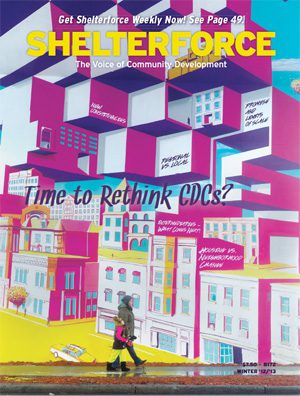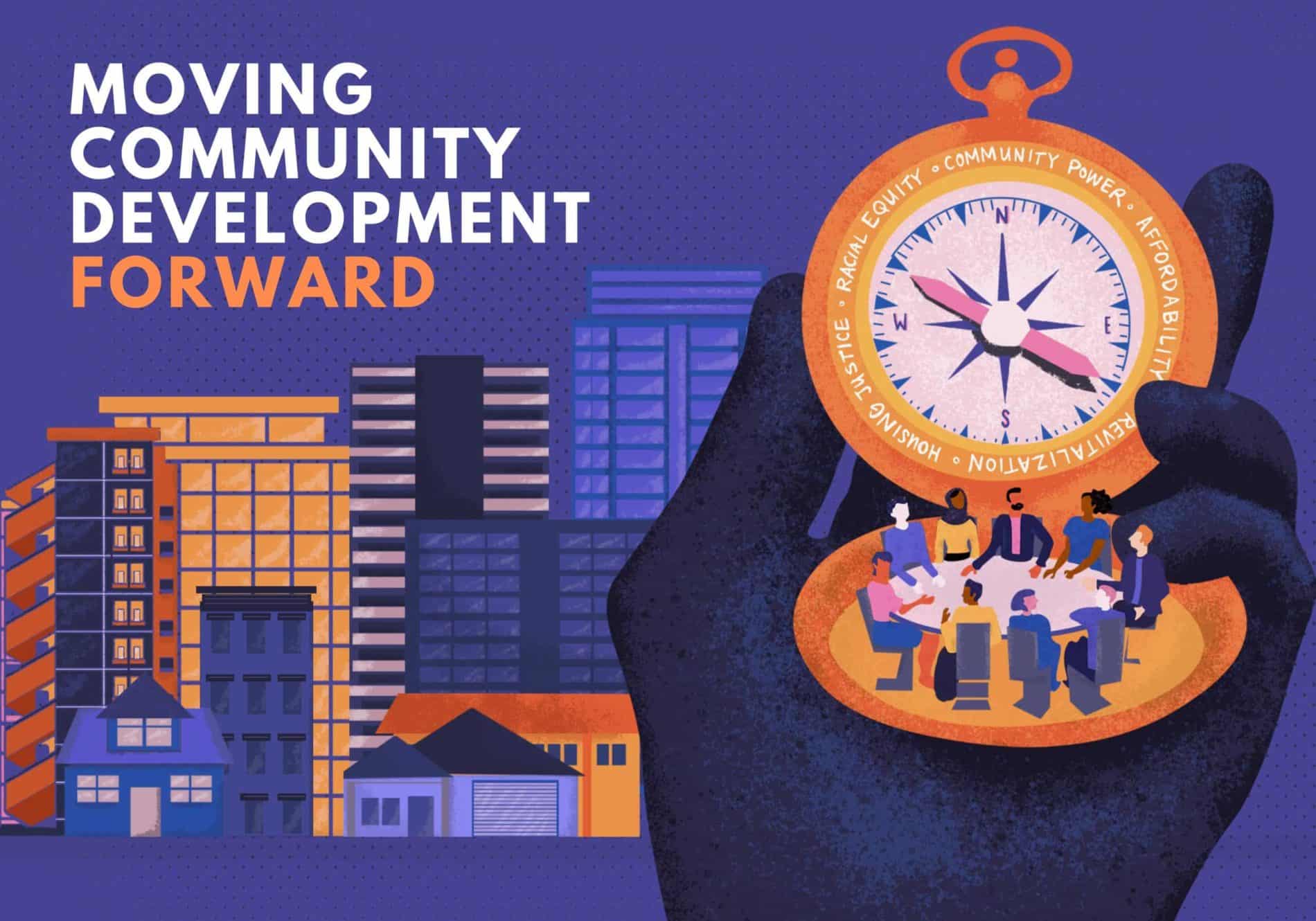
Beyond Traditional Outcomes
I just argued that more community organizing would be good for community development because it could lead to more capital funding for community development. And now I am going to critique myself for making this argument.
It is the wrong way of looking at the benefits of community organizing. It’s there, sure. But it is not the real reason why community development should make a deeper investment in community organizing.
Part of the reason why CDCs have not been able to sustain a consistent, long term set of community organizing programs—why most CDCs have not been able to do community organizing at the depth and scale and for the duration that Chinatown CDC has been able to—is that many CDCs’ relationship to community organizing has become corrupted. As CDCs became more focused on real estate development, organizing became more about gaining approval and funding for real estate development projects. The relationship with community residents became more of a means to an end rather than an end in and of itself.
So community development must move beyond a politically instrumentalist approach to community organizing.
Here again, the example of Chinatown CDC is illuminating. Chinatown CDC has been successful at community organizing for so long because of a deep belief that creating community is the end goal of community organizing. But even more than this, CCDC has been so successful for so long because of love.
Because of love, the Rev. Norman Fong would run through a wall for Chinatown residents. Because of love, CCDC has a deep staff, full of people who understand what community is really about. Over beers, I have heard a CCDC staffer say that, of everything that CCDC has done—all the successful policy campaigns, all the units of affordable housing produced, all the services provided—he is most proud of the holiday parties put on by the Chinatown tenants associations, most inspired by a room full of people who have struggled together and supported each other, who know that they will do it again but who are now just taking time off and enjoying each other’s company.
It’s the love in the room. It’s the camaraderie, the karaoke… the feeling of community. Not just the feeling of community, the tangible actuality of community. And I can’t help but think that this is the special sauce that community development has been missing.





Thanks for sharing this. It is great and refreshing to hear that people value community building, and that fostering human capital is as important or more important than counting units of houses and other econimic indicators. It’s a message that tends to get lost in our day to day runnings.
It’s so nice to hear that Norman Fong is still at Chinatown CDC— I haven’t seen him in 15 years. That sort of stability helps build the community base as well, of course. Hi Norman.
Steve Lockwood, Frayser CDC, Memphis
While I completely agree with the sentiment of the posting, I question the “corruption” charge of CDCs. The business model of running a CDC has seen demands from funders in both the private/public sector for results, measurements and data as the primary mission. I have not met one person in a CDC- board or staff- that does not support organizing and engagement. However, we expect the CDCs do this work simply from passion and drive, which does not pay the bills. I see a positive future for a renewal of organizing and advocacy demonstrated with the young people coming into the movement and older staff embracing our roots for change and action. It is not about the special sauce Josh, it is in the words of Langston Hughes-
“Freedom
Is just frosting
On somebody else’s
Cake—
And so must be
Till we
Learn how to
Bake.”
So let’s start baking that organizing cake.
It is definitely not an either/or proposition. We need need capital and the results it produces in order to have a community that is livable, accessible and secure. And producing with and for our communities requires hard-headed businesslike practices and attention to results. But it also requires a committed community, community leaders and a shared sense of purpose and history. None of the gains that we make in our communities will last if we don’t build and maintain the human infrastructure that will defend and preserve the capital and physical infrastructure. I don’t think that CDCs have been corrupted necessarily by the need to produce and sustain big expensive things like decent homes, public facilities, common space and local enterprises. Rather I think that all too many have been lulled into the myth that these come about and succeed over the long term as a result of technical proficiency. Building and sustaining political will is the essential to our community development goals.
Josh and all,
I’m delighted to see you (Josh) shine the light on this issue. Thank you!
It is equally refreshing to see the discussion continue; however, I think the issues require much broader circulation and deliberation toward re-framing the people, programs, metrics and funding that drive community development.
From an affordable housing perspective, the drive to produce housing – with its mixed bag of motivations is quite focused and quantified via simple metrics: number of houses built and or families served and volunteers engaged. These “outputs” and metrics are vitally important in this age where scarcity (funding and affordable housing stock) is the pervasive worldview. Yet, underlying these simple metrics are a vast array of systems and their power-full (and disempowering) structures.
If sustainable and fair community development is to occur (for the “common good of the neighborhood”) – whether it is framed by housing, food security, health, corrections reform or some other “organizing” issue, – there must be, as Josh points out, a transformation (re-framing) of the systems and structures that empower and disempower people and places. I offer a few points to ponder.
Understanding and engaging these systems and structures requires collaboration across neighbors, associations, organizations and institutions. Building local and regional social and economic capital (bonding and bridging) is essential to generative and sustainable funding: social enterprises. It also requires integrative metrics that vastly transcend simple product delivery: complex metrics make our heads hurt, but are necessary.
In simple terms, effective and sustainable community development requires Asset Based Community Development in which the unique gifts (knowledge, skills, and abilities) – gifts of head, heart and hands – are discovered by residents, creatively organized by residents and applied in, with and across the systems at work in the community. The latent power of people (residents) is applied collaboratively for the “common good of the neighborhood”.